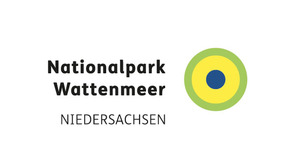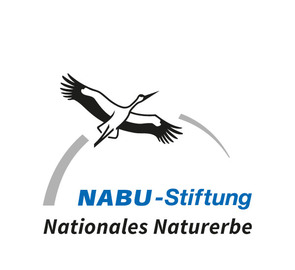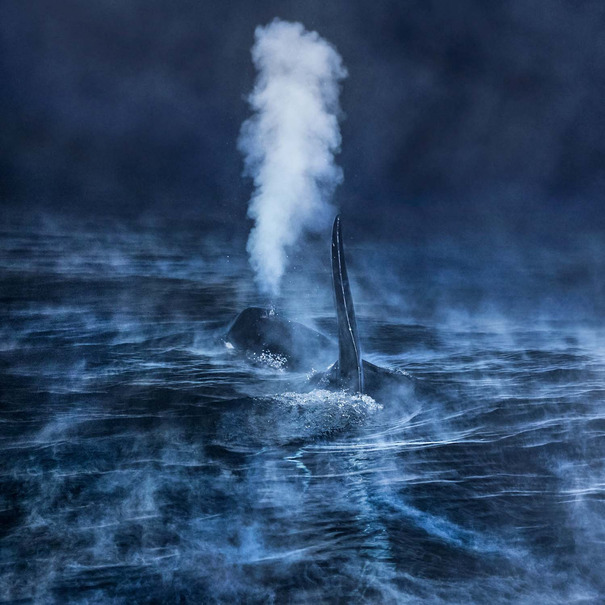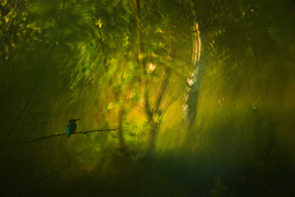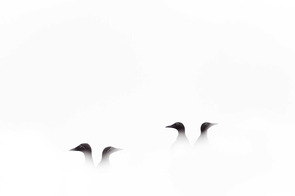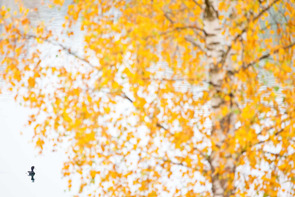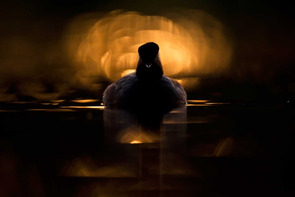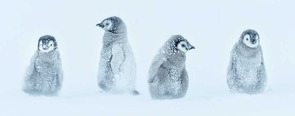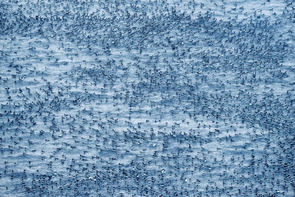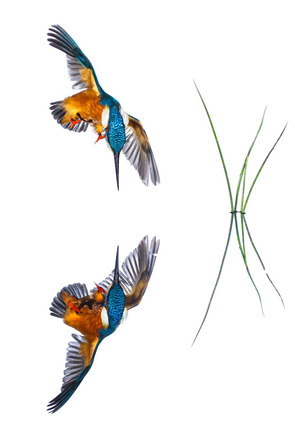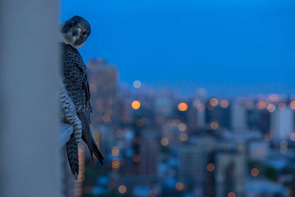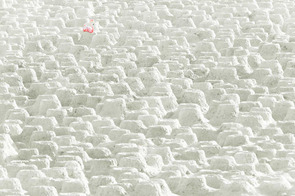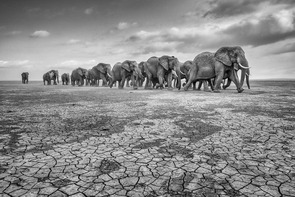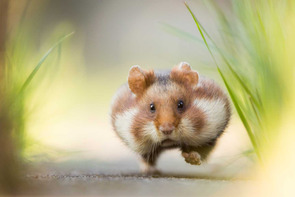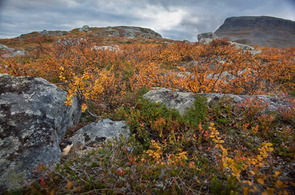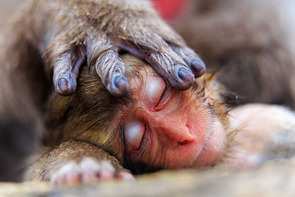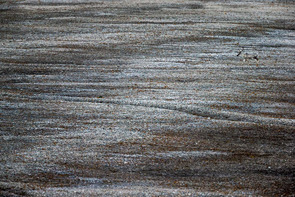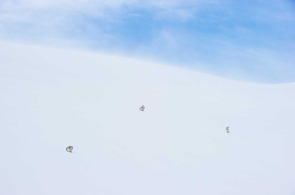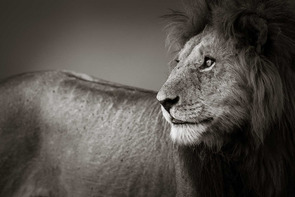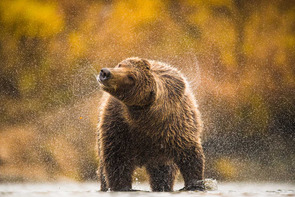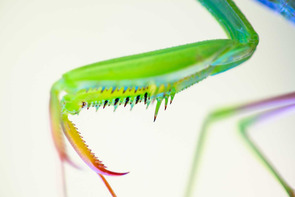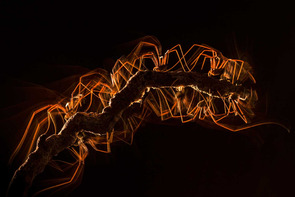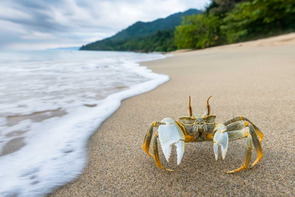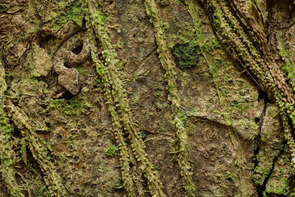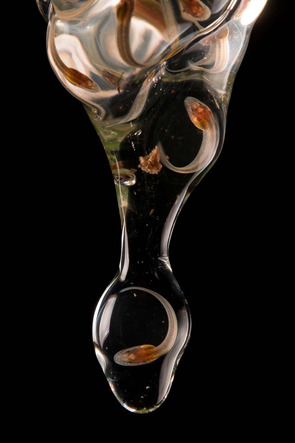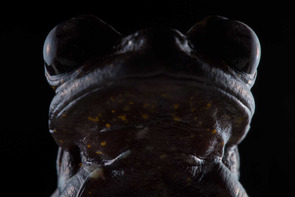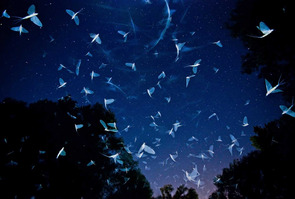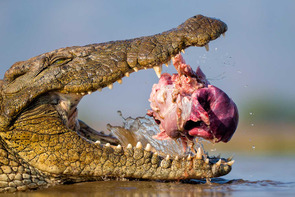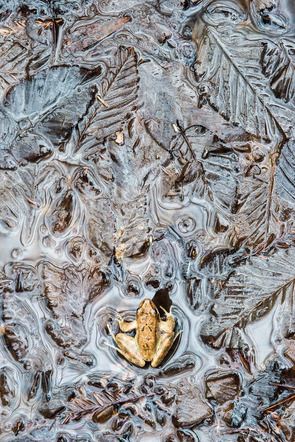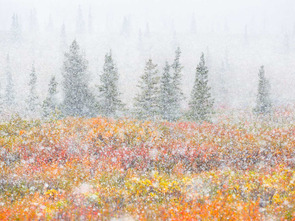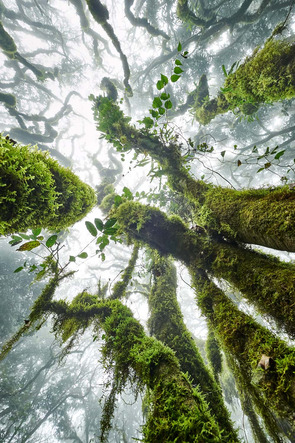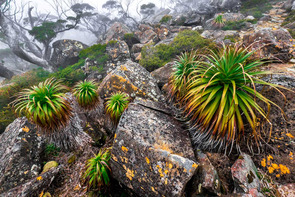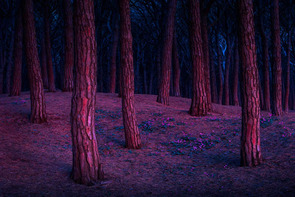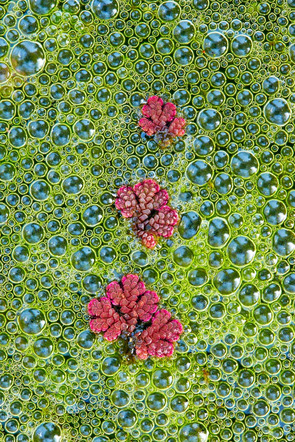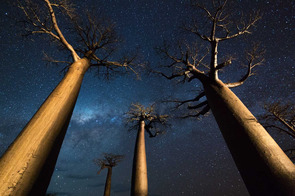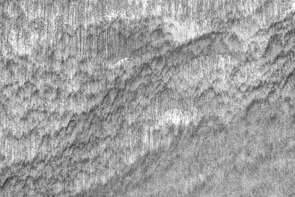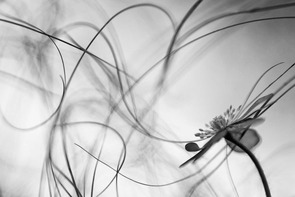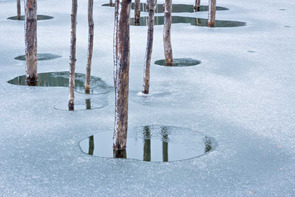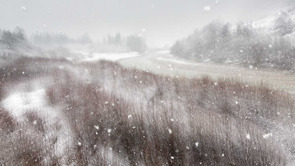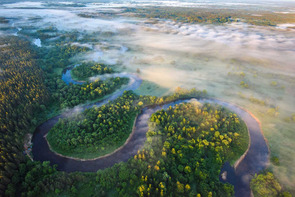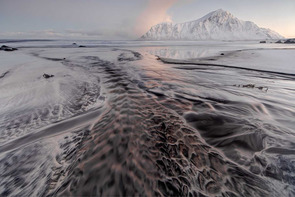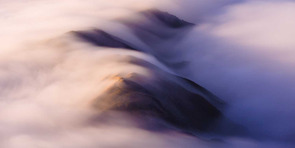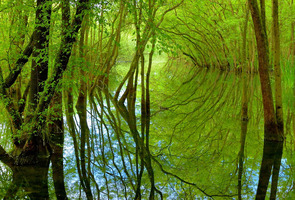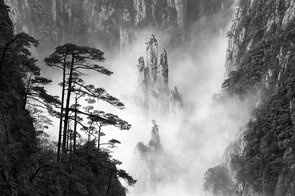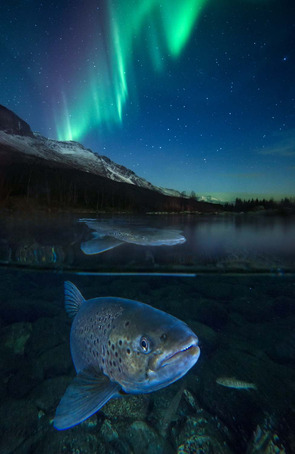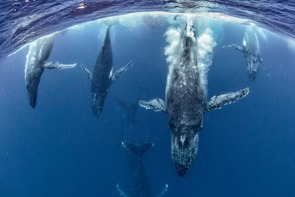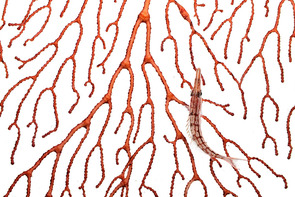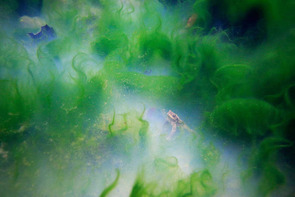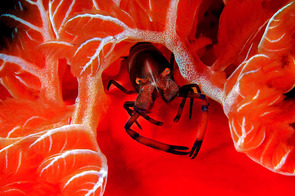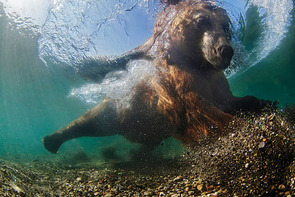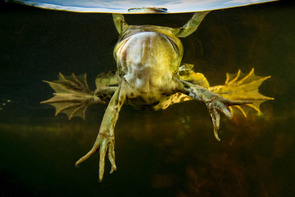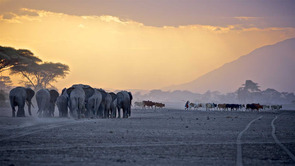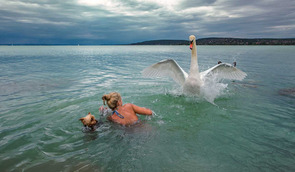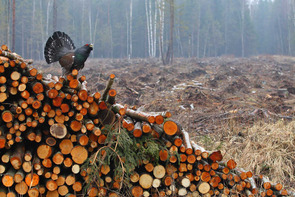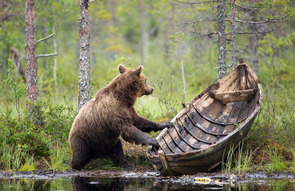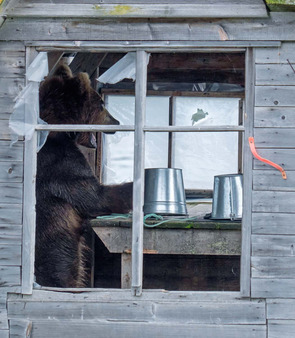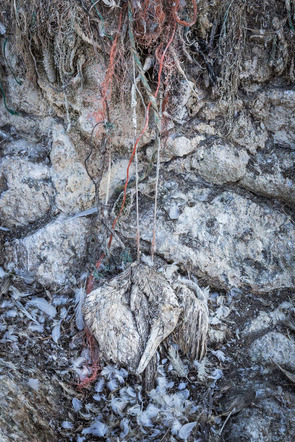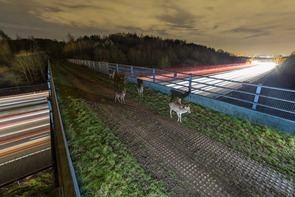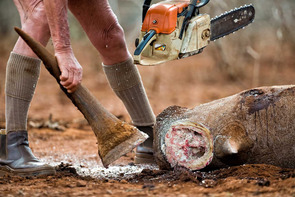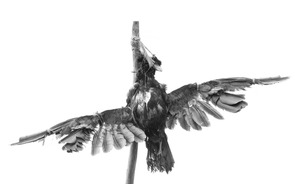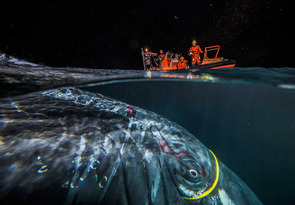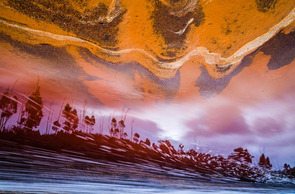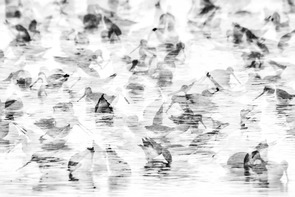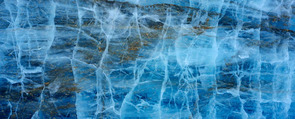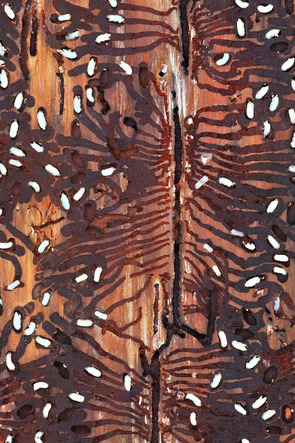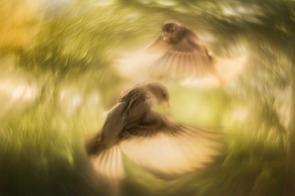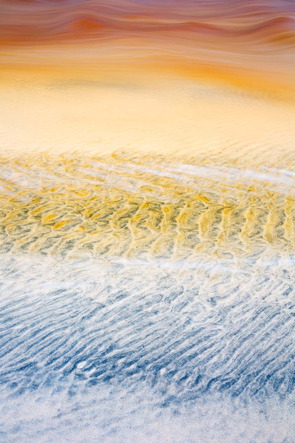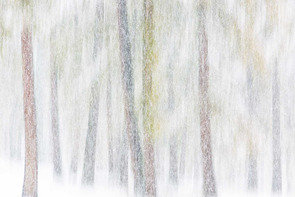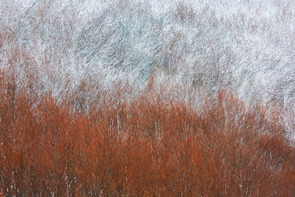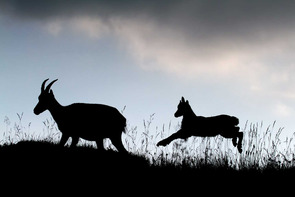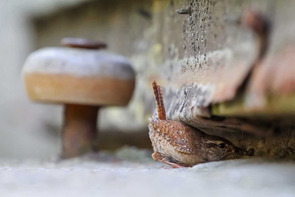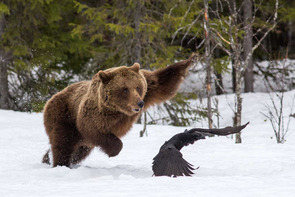Overall Winner - Audun Rikardsen (Norway)
A breath in the polar night
Biography Audun Rikardsen
A fjord near Tromsø in northern Norway: it is early January, and while a fishing trawler is hauling up its nets, a group of orcas tries to grab a free meal. The extreme cold and high humidity create a magical mist on the sea. My boat, my camera and even myself are covered in ice crystals, turning photography into a real challenge. It takes hours before I finally manage to capture an orca taking a breath on the surface of the sea.
Canon EOS-1DX, 2.8/24-70mm, ISO 4000, flash Canon 600
Biography Audun Rikardsen
Audun Rikardsen grew up in a little fishing village in the north of Norway, and has always had a special fascination for the Nordic coasts; their culture and wildlife both above and under the ocean's surface. He is a professor of biology at Tromsø University, and to make the best use of his free time, most of his photographs have originated from around his local area. Originally, he worked as a fish biologist, but today his research focuses on the behaviour of whales. His grandfather was a whaler and so his interest for marine mammals was kindled from an early age. He often combines his photography with his scientific work, thus benefiting from his knowledge of local wildlife and habitat. Audun’s photography projects document the dramatic changes of the marine eco-systems in his home region, the onset of which began a few years ago during the winter months. To depict the world above and below the water's surface he has developed a unique camera system including a special underwater housing and powerful flash system that produces good results in the poor light conditions of the polar winter. www.audunrikardsen.com
Introductory note to the Competition European Wildlife Photographer of the year 2016
PrefaceThis year the European Wildlife Photographer of the Year competition is celebrating its 16th anniversary. During this time, the number of submitted photographs has continuously increased – this year almost 18 000 images from 38 countries have been entered, making it a well established component of European amateur and professional photography. And deservedly so: just as in previous years, the awarded images illustrate the excellence of European wildlife photography.
The selected photographs are often surprising, visually very effective, poetic and sometimes also amusing. Created without the aid of image manipulation, they demonstrate the unique beauty of nature. Above all, they have one thing in common: they touch the viewer and thus raise awareness for nature. They support the idea of nature conservation through means of photography alone.
The overall winning photograph by Audun Rikardsen from Norway shows a classic subject of nature photography: a killer whale or orca surfacing to breathe at the water's surface on a dark, very cold morning.
Audun Rikardsen created a very poetic, mysterious image, depicting this well-known subject of nature photography with an interesting paradox: it has a powerful and dark effect to it, but also appears fragile. The photograph evokes interest to look closer, curiosity to discover even more and it inspires thoughts and imagination. And this photograph also reflects the actual situation of the orcas: as so-called top-level predators, orcas are not considered an endangered species, but individual populations do suffer from heavy losses.
For many other sea dwellers the situation is even more alarming. Numerous species have become rare, endangered or have considerably shrunk in numbers. The primary reasons for this are fishing, climate change and discharge of nutrients and pollutants.
To improve the protection of marine habitats we need a sustainable balance between preservation and exploitation. The Federal Agency for Nature Conservation has been pointing out the importance of protecting the oceans for decades and has committed itself to this aim on a national and international basis. Additional players like nature photographers, whose images often express more than many words, are important partners for us in conveying this matter.
But now, I would like to invite you to marvel at the best photographs from this year's competition. Once again, let the effect of these extraordinary images sink in, taking you on a journey into the diversity and beauty of nature. I hope the awarded nature photographs will inspire you to take a closer look again at the nature of your daily surroundings and I would be very pleased if you found your own ways to help protect nature.
Prof. Dr. Beate Jessel
President of the Federal Agency for Nature Conservation
Jury´s comment
from Theo BosboomWhat a joy and honour it was to be a member of the jury of the 2016 edition of the European Wildlife photographer of the year! An honour first of all because it is one of the most important nature photo competitions in the world, particularly because for me, and many others, it is also the most exciting one, with a long tradition of awarding innovative and creative photographs of nature. And an honour because my fellow jury members – Alex Mustard, Pete Cairns, Cornelius Nelo and Guillaume Billy – are all very skilled and well respected photographers, whose work I have been following for many years. It was a big joy because of the high standard of the submitted pictures. The quality of the pictures just seems to get better each year and it is very inspirational to see so many great images in such a short time. But the best part of the long jury weekend was for me the way we were able to work together as a jury.
Although on paper the jury was not really diverse – five male photographers, all from northern Europe (!) – our tastes were refreshingly different. We were all championing our own favourites in what we felt best represented the European Wildlife Photographer of the Year competition. Just as importantly we were all willing to listen to the passionate and persuasive arguments of each other. We were true democrats fighting for the best possible outcome. It was all about idealism and conviction, never about hierarchy. Despite all the different opinions and discussions, we were unanimous about the overall winner and were all most content with the final selection.
The GDT received around 20.000 images from … European countries this year. This is a new record, confirming the popularity of the contest. So what is needed to get your picture through all the rounds of judging into the final selection of winning images? The demanding prejudging process was executed by all jury members individually, at home behind their own computer, without hearing the opinions of the others. Efficiency is inevitable when you have to judge such a large amount of pictures, which means that you decide in a few seconds and with one push of a button if you want an image to go through or not. This may seem a bit unfair to all photographers that put so much effort in taking the images and selecting and preparing them for the contest. But when you ask yourself the question “is this a potential winner” the really outstanding images are quite easy to spot. I should make it clear that we were asked to be big-hearted in this first round, and be generous if there was any doubt. Finally, all jury members have taken part in photo competitions themselves, most still enter, and so entrants can be assured we felt the full responsibility of taking the right decisions.
The second stage of judging took place during a 3 day session in Potsdam, Germany. At this stage there were thousands of images left, all of high quality and usually technically flawless. At this stage the judges valued originality and approach more than anything. As a jury member, it is nice to be surprised and if you see an image you have not seen before you are more likely to vote for it. Nevertheless it is very clear that nature photographers do favour certain species and certain places above others, often following – consciously or unconsciously – inspirational work from other photographers or even awarded pictures from previous contests. This might not be the best strategy to get awarded, although some pictures from iconic places and species do make it to the final selection each year, when they add a new original twist to the subject or if they manage to surpass the level of perfection that their predecessors had already reached.
When we reached the final stages of judging the pictures that were still in the race were checked for digital image manipulation (by controlling the raw files) and we discussed any other forms of manipulation. This has unfortunately lead to the disqualification of some stunning images that did not comply with the rules. In some cases this was extra sad, because we found that the image would have been selected and sometimes even would have been better without the manipulation. Like I mentioned before, the jury was unanimous in the choice for the overall winner. It is an exciting image, that grabbed our attention from the first time we saw it. You could say that the image has it all: it has a great mood, an impressive species and the perfect timing. Furthermore it is innovative, because it shows a fresh insight into the behaviour of killer whales in a cold and dark winter night and is taken in challenging conditions with the intelligent use of artificial light and a high iso setting that a modern camera allows for. And yet this photograph has a timeless quality of a classic image of nature as well, it is simple and very effective. This rare combination of elements was simply irresistible to the jury and made this image a well deserved winner.
On behalf of the jury
Theo Bosboom
We´d like to thank our sponsors:

















